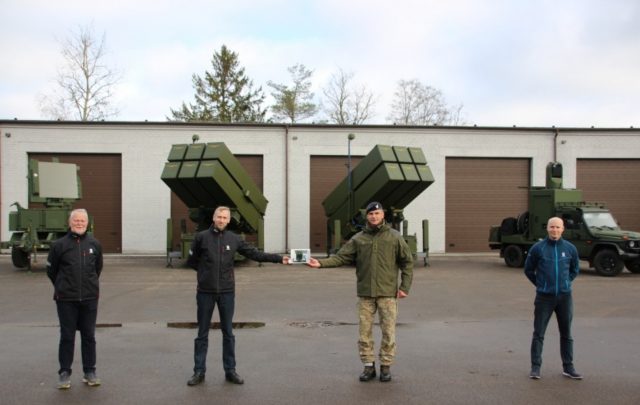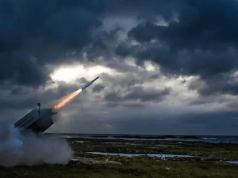The Lithuanian Armed Forces have officially taken delivery of the NASAMS medium-range air defense system from Norwegian defense contractor Kongsberg.
The delivery documents were signed on October 30, after the system arrived at the Lithuanian Armed Forces Air Defence Battalion in Radviliškis this summer.
“Guarded airspace is among the most critical enablers for allies to deploy into the region if such a necessity arises,” Lithuanian defense minister Raimundas Karoblis said. “We have acquired a fully assembled and integrated mid-range air defense capability, something we were in need and short of so far, in NASAMS. This, to a degree, fills one of the worst gaps in national defense – airspace security.”
NASAMS is the most widely used medium-range air defense system across NATO, with 15 users worldwide. Lithuania has acquired the latest, third generation system (NASAMS 3), becoming only the second country to acquire the version after Norway. NASAMS 3 features improved communications and software alongside upgraded missile canister launchers.
Lithuania will couple NASAMS with the upgraded short-range air defense systems RBS-70 for an integrated air defense shield.
Lithuania expects to start embedding its NASAMS into the NATO Integrated Air Defence System by 2021.
NASAMS 3 incorporates the Raytheon AMRAAM Extended Range missile (AMRAAM ER). It contains a command post, Raytheon AN/MPQ-64F1 Sentinel active 3D radar, a passive electro-optical and infrared sensor and a number of missile canister launchers. Other missiles that can be launched from a NASAMS include the AIM-120 AMRAAM B/C5/C7, and the AIM 9-X Sidewinder Block II missile.
According to the manufacturer, the radar and launcher elements can be deployed over a large area separated by more than 20 kilometers from the command post, providing extended coverage with few elements.



























